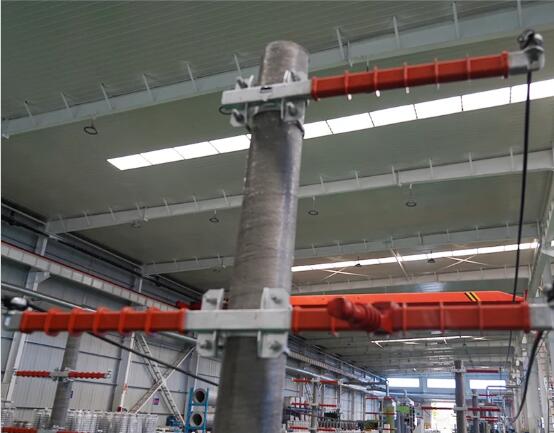Engineering Excellence: Unique Design Features Enhancing Polyurethane Composite Utility Poles
2024-02-26
In the realm of utility infrastructure, innovation is the cornerstone of progress. As utility companies strive for more efficient, resilient, and sustainable solutions, the design of utility poles plays a pivotal role in shaping the future of the industry. Among the myriad options available, polyurethane composite utility poles stand out for their unique design features and enhancements that contribute to their unparalleled performance. Let's delve into the engineering excellence behind these remarkable poles.
1. Composite Construction:
At the heart of polyurethane composite utility poles lies their composite construction. These poles are meticulously engineered using a blend of high-strength resins and fiberglass reinforcements, creating a lightweight yet incredibly durable structure. This composite design offers exceptional strength-to-weight ratio, allowing the poles to withstand heavy loads, high winds, and other environmental stresses without sacrificing performance.
2. Modular Design:
Polyurethane composite utility poles often feature a modular design, allowing for easy assembly and customization. This modular approach streamlines manufacturing processes and enables utility companies to tailor poles to specific height requirements or load-bearing capacities. Additionally, modular design facilitates efficient transportation and installation, reducing logistical challenges and project timelines.
3. Tapered Profiles:
Many polyurethane composite utility poles boast tapered profiles, with larger diameters at the base tapering to smaller diameters towards the top. This tapered design enhances structural stability and load distribution, particularly in windy conditions. By reducing wind resistance and minimizing pole deflection, tapered profiles contribute to improved resilience and longevity.
4. Integrated Hardware Mounting Systems:
To accommodate various hardware attachments such as crossarms, insulators, and conductors, polyurethane composite utility poles often feature integrated mounting systems. These systems are designed to securely anchor hardware to the pole without compromising structural integrity. By eliminating the need for drilling or external hardware, integrated mounting systems enhance both aesthetic appeal and functional performance.
5. Corrosion-Resistant Hardware:
In coastal or corrosive environments, traditional utility poles are vulnerable to corrosion, which can compromise safety and performance. Polyurethane composite utility poles address this challenge by incorporating corrosion-resistant hardware, such as stainless steel fittings and fasteners. This ensures long-term reliability and minimizes maintenance requirements in harsh operating conditions.
6. Enhanced Insulation Properties:
Polyurethane composite utility poles offer superior insulation properties compared to traditional materials like wood or steel. The composite materials used in their construction have inherently low thermal conductivity, reducing the risk of electrical arcing and enhancing safety. Additionally, these poles provide better protection against lightning strikes, mitigating the risk of damage to electrical infrastructure.
In conclusion, the design features and enhancements unique to polyurethane composite utility poles represent the pinnacle of engineering excellence in the utility industry. From composite construction and modular design to tapered profiles and integrated hardware mounting systems, these poles embody innovation, resilience, and sustainability. As utility companies continue to embrace modernization and efficiency, polyurethane composite utility poles stand as a testament to the transformative power of advanced engineering in shaping the future of infrastructure.


